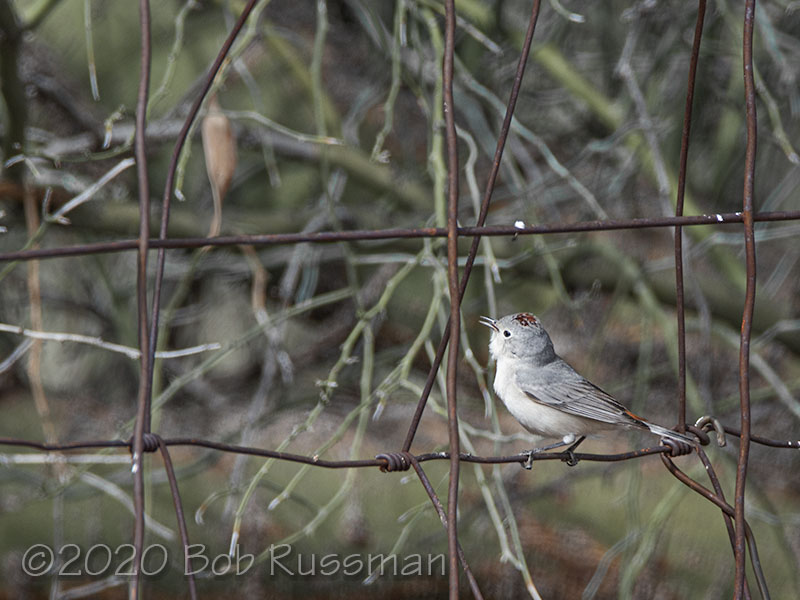
The Lucy’s Warbler starts to show up in my Tucson yard during late March or early April. They winter in Mexico and migrate north into Arizona during the spring to mate and raise their young. Each spring, for a brief period, we get to enjoy watching Lucy’s Warbler families forage for food near our feeders.
Lucy’s Warblers are small birds. Gray in color overall, with lighter shades on its underside. A distinguishing mark of this bird is a brown rump. The male also exhibits a brown patch on its crown.
These birds have been known as “mesquite warblers’ in the past because of their preference to nest and forage in riparian mesquite tree habitat. Our neighborhood has many native mesquite trees with six trees on our one acre property. I enjoy watching these busy warblers searching the leaves and branches for insects. They are quite active and trying to photograph them can be a challenge.
The Lucy’s is a cavity nester. A unique behavior for North American warblers shared only by the Lucy’s and the Prothonotary Warbler.
Lucy Warbler populations are in decline, probably to the loss of older mesquite trees that provide nesting cavities. The Tucson Audubon is leading a community experiment to determine if there is a nest box that would serve as a substitute for nesting cavities. They have sought volunteers to help in their research and you can help. Click here to get more information.